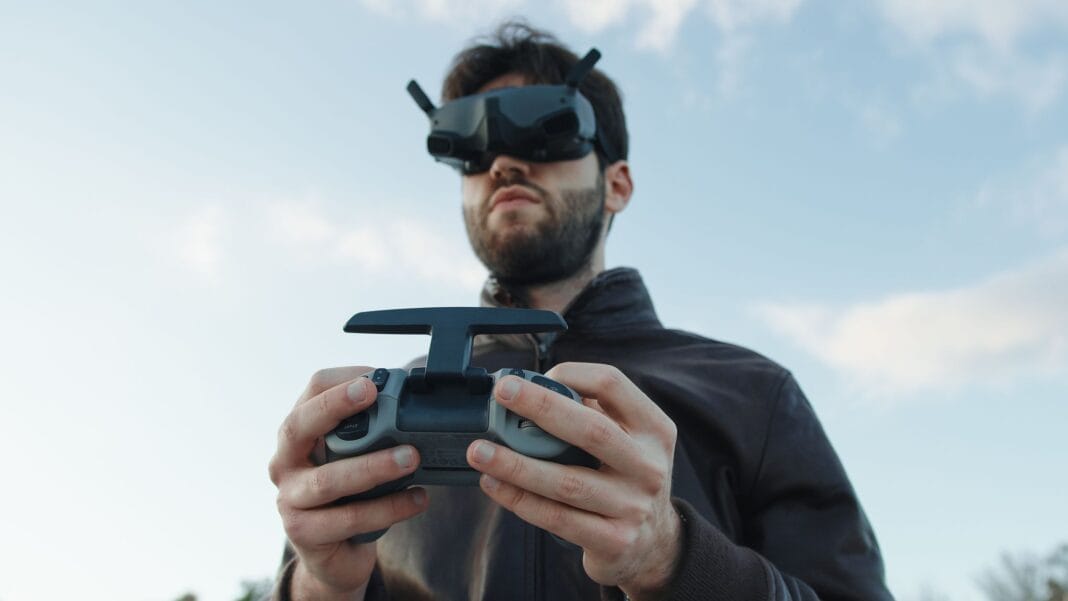Flying drones has rapidly evolved from a casual hobby into a thriving industry and an adrenaline-pumping sport. With the advent of First Person View (FPV) technology, enthusiasts can immerse themselves in drone flying like never before, directly experiencing the thrill of airborne adventures. Central to this experience are FPV goggles, which provide a visual feed from the drone’s onboard camera, making the pilot feel as though they’re in the cockpit. Given the multitude of options available, selecting the best FPV goggles can be daunting. This comprehensive guide seeks to illuminate you about the finest choices on the market, ensuring unparalleled visual delight.
Understanding FPV Goggles
What Are FPV Goggles?
FPV goggles are specialized eyewear that allows pilots to receive a live video transmission from their drone, offering a real-time view of the drone’s camera. They consist of a display screen or pair of screens, optics for magnification, a receiver to capture video signals, and a battery for portability.
Why Are They Important?
The primary advantage of FPV goggles is the immersive experience they provide. By viewing the world from the drone’s perspective, users gain precision control, enhanced maneuverability, and an exhilarating perspective that elevates the flying experience. For competitive drone racing, quality FPV goggles are indispensable for achieving optimal performance.
Key Features to Consider
When selecting FPV goggles, several features are crucial to attaining an immersive and efficient flying experience:
Field of View (FOV)
A larger FOV offers a more immersive experience, replicating a true pilot’s view. Models vary from around 30 degrees to over 50 degrees, with those at the higher end providing a wide perspective that feels more natural.
Resolution and Display Quality
Higher resolution ensures a clearer and more detailed view. Common display types include LCD and OLED, with OLED typically offering superior contrast and color accuracy. Higher resolution and quality displays are paramount for navigation and identifying obstacles.
Latency
Latency is the delay between the camera’s capture and the display on the goggles. For racing and precise flying, low latency is critical, ensuring that pilots react in real-time to the drone’s movements.
Comfort and Fit
Comfort is essential for prolonged use. Look for goggles with adjustable straps, cushioned eyepieces, and, ideally, lightweight construction to prevent fatigue.
Receiver Quality
The quality and range of the receiver affect signal strength and image quality. Additional features like diversity receivers, which use two antennas, improve reception for a stronger, more reliable signal.
Top FPV Goggles
Based on these crucial features, here’s a curated list of some of the best FPV goggles on the market as of today.
DJI Goggles 2
Renowned for their high quality, the DJI Goggles 2 are a top choice for both hobbyists and professionals. The goggles are equipped with dual-HD displays, providing a top-of-the-range resolution that ensures crisp visuals. Their zero-latency technology delivers real-time video, essential for racing.
Fat Shark Dominator HDO2
A mainstay in the FPV community, the Fat Shark Dominator HDO2 offers brilliant OLED displays with excellent resolution and contrast. The adjustable FOV and IPD (Interpupillary Distance) settings cater to individual comfort and visual preference, making these goggles versatile and adaptable.
Skyzone SKY04X
This model is lauded for its impressive 1280×960 resolution powered by high-quality OLED displays. With a FOV of 46 degrees, users experience a broad visual scope. Its diversity receiver ensures strong and stable video transmission.
Orqa FPV.One Pilots
Ultimate performance and customizable settings define the Orqa FPV.One Pilots goggles. With OLED screens offering vibrant colors and an impressive FOV, they’re ideal for racing and freestyle flying. The modular design allows pilots to adapt features like head tracking and wireless video modules.
Maintenance and Care
To prolong the life of your FPV goggles, regular maintenance is crucial. Keep the lenses clean using microfiber cloths, ensure batteries are correctly charged and not over-drained, and store them in protective cases to prevent damage from drops or dust.
Selecting the best FPV goggles is pivotal for maximizing your drone flying experience. Consider factors like FOV, display quality, latency, comfort, and receiver capabilities to ensure you choose a model that complements your flying style. The models highlighted in this guide offer top-tier performance and are worthy contenders in the quest for the ultimate visual immersion. Whether you’re a casual flyer or a competitive racer, investing in quality FPV goggles will undoubtedly elevate your aerial adventures.



